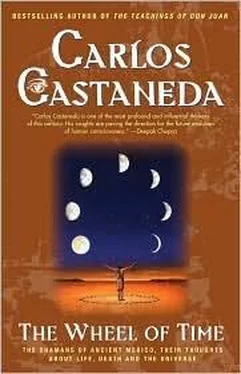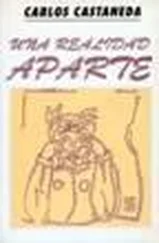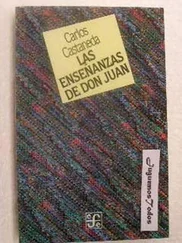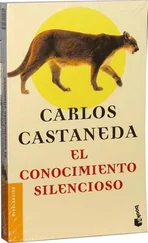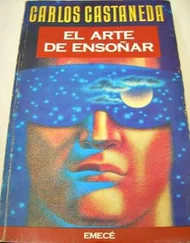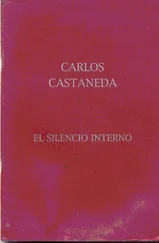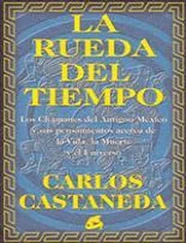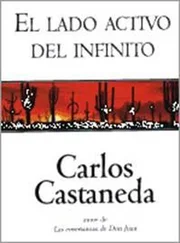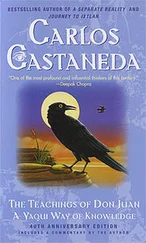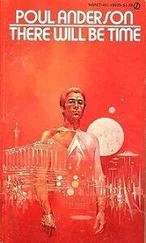
Carlos Castaneda
The Wheel Of Time
This series of specially selected quotations was gathered from the first eight books that I wrote about the world of the shamans of ancient Mexico. The quotations were taken directly from the explanations given to me as an anthropologist by my teacher and mentor don Juan Matus, a Yaqui Indian shaman from Mexico. He belonged to a lineage of shamans that traced its origins all the way back to the shamans who lived in Mexico in ancient times.
In the most effective manner he could afford, don Juan Matus ushered me into his World, which was, naturally, the world of those shamans of antiquity. Don Juan was, therefore, in a key position. He knew about the existence of another realm of reality, a realm which was neither illusory, nor the product of outbursts of fantasy. For don Juan and the rest of his shaman-companions – there were fifteen of them – the world of the shamans of antiquity was as real and as pragmatic as anything could be.
This work started as a very simple attempt to collect a series of vignettes, sayings, and ideas from the lore of those shamans that would be interesting to read and think about. But once the work was in progress, an unforeseeable twist of direction took place: I realized that the quotations by themselves were imbued with an extraordinary impetus. They revealed a covert train of thought that had never been evident to me before. They were pointing out the direction that don Juan's explanations had taken over the thirteen years in which he guided me as an apprentice.
Better than any type of conceptualization, the quotations revealed an unsuspected and unwavering line of action that don Juan had followed in order to promote and facilitate my entrance into his world. It became something beyond a speculation to me that if don Juan had followed that line, this must have also been the way in which his own teacher had propelled him into the world of shamans.
Don Juan Matus's line of action was his intentional attempt to pull me into what he said was another cognitive system. By cognitive system, he meant the standard definition of cognition: "the processes responsible for the awareness of everyday life, processes which include memory, experience, perception, and the expert use of any given syntax." Don Juan's claim was that the shamans of ancient Mexico had indeed a different cognitive system than the average man's.
Following all the logic and reasoning available to me as a student of the social sciences. I had to reject his statement. I pointed out to don Juan time and time again that whatever he was claiming was preposterous. It was, to me, an intellectual aberration at best.
It took thirteen years of hard labor on his part and on mine to discombobulate my trust in the normal system of cognition that makes the world around us comprehensible to us. This maneuver pushed me into a very strange state: a state of quasi-distrust in the otherwise implicit acceptance of the cognitive processes of our daily world.
After thirteen years of heavy onslaughts, I realized, against my very will, that don Juan Matus was indeed proceeding from another point of view. Therefore, the shamans of ancient Mexico must have had another system of cognition. To admit this burned my very being. I felt like a traitor. I felt as if I were voicing the most horrendous heresy.
When he felt that he had overcome my worst resistance, don Juan drove his point as far and as deep as he could into me, and I had to admit, without reservations, that in the world of shamans, shaman practitioners judged the world from points of view which were indescribable to our conceptualization devices. For instance, they perceived energy as it flowed freely in the universe, energy free from the bindings of socialization and syntax, pure vibratory energy. They called this act seeing.
Don Juan's prime objective was to help me to perceive energy as it flows in the universe. In the world of shamans, to perceive energy in such a manner is the first mandatory step toward a more engulfing, freer view of a different cognitive system. In order to elicit a seeing response in me. don Juan utilized other foreign units of cognition. One of the most important units, he called the recapitulation, which consisted of a systematic scrutiny of one's life, segment by segment, an examination made not in the light of criticism or finding flaw, but in the light of an effort to understand one's life, and to change its course. Don Juan's claim was that once any practitioner has viewed his life in the detached manner that the recapitulation requires, there's no way to go back to the same life.
To see energy as it flows in the universe meant, to don Juan, the capacity to see a human being as a luminous egg or luminous ball of energy, and to be able to distinguish, in that luminous ball of energy, certain features shared by men in common, such as a point of brilliance in the already brilliant luminous ball of energy. The claim of shamans was that it was on that point of brilliance, which those shamans called the assemblage point, that perception was assembled. They could extend this thought logically to mean that it was on that point of brilliance that our cognition of the world was manufactured. Odd as it may seem, don Juan Matus was right, in the sense that this is exactly what happens.
The perception of shamans, therefore, was subject to a different process than the perception of average men. Shamans claimed that perceiving energy directly led them to what they called energetic facts. By energetic fact, they meant a view obtained by seeing energy directly that led to conclusions that were final and irreducible; they couldn't be tampered with by speculation, or by trying to fit them into our standard system of interpretation.
Don Juan said that for the shamans of his lineage, it was an energetic fact that the world around us is defined by the processes of cognition, and those processes are not unalterable: they are not givens. They are a matter of training, a matter of practicality and usage. This thought was extended further, to another energetic fact: the processes of standard cognition are the product of our upbringing, no more than that.
Don Juan Matus knew, beyond the shadow of a doubt, that whatever he was telling me about the cognitive system of the shamans of ancient Mexico was a reality. Don Juan was among other things, a nagual, which meant, for shaman practitioners, a natural leader, a person who was capable of viewing energetic facts without detriment to his well-being. He was, therefore, capacitated to lead his fellow men successfully into avenues of thought and perception impossible to describe.
Considering all the facts that don Juan had taught me about his cognitive world, I arrived at the conclusion, which was the conclusion that he himself shared, that the most important unit of such a world was the idea of intent. For the shamans of ancient Mexico, Intent was a force they could visualize when they saw energy as it flows in the universe. They considered it an all-pervasive force that intervened in every aspect of time and space. It was the impetus behind everything; but what was of inconceivable value to those shamans was that intent – a pure abstraction – was intimately attached to man. Man could always manipulate it. The shamans of ancient Mexico realized that the only way to affect this force was through impeccable behavior. Only the most disciplined practitioner could attempt this feat.
Another stupendous unit of that strange cognitive system was the shamans' understanding and usage of the concepts of time and space. For them, time and space were not the same phenomena that form part of our lives by virtue of being an integral part of our normal cognitive system. For the average man, the standard definition of time is "a nonspatial continuum in which events occur in apparently irreversible succession from the past through the present to the future." And space is defined as "the infinite extension of the three-dimensional field in which stars and galaxies exist; the universe."
Читать дальше
